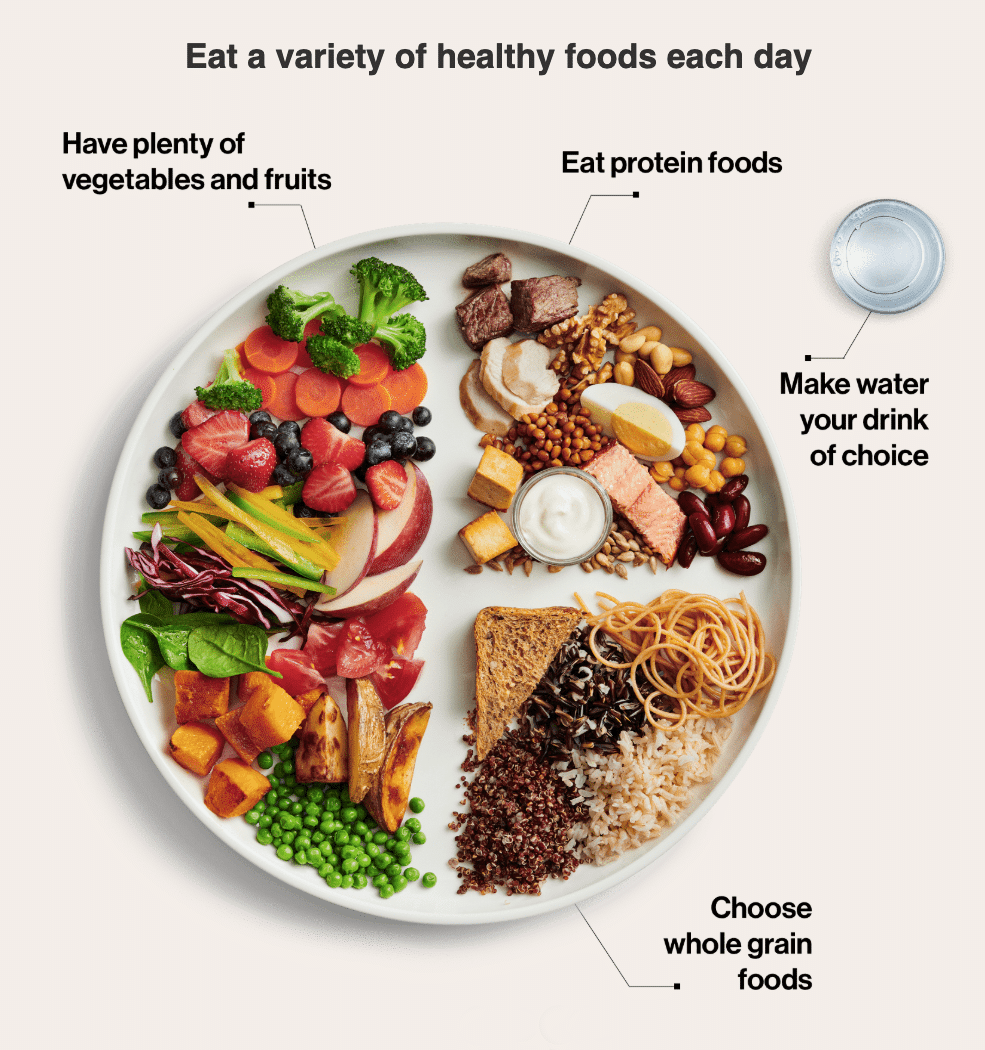Happy Nutrition Month! March is a month dedicated to help educate and empower Canadians to make informed food choices and to help create healthy habits. What better opportunity to discuss the launch of the new Canada’s Food Guide.
What’s New?
After almost 12 years, Canada has launched their updated Food Guide to help simplify nutrition guidelines for the Canadian population. The guide gives more emphasis to eating more plant-based foods such as lentils, nuts & seeds and soy products. In turn, this can help increase your fibre intake, vegetables & fruit intake, and soy-based proteins which can all help decrease your overall risk of heart disease. In fact, almost 50% of deaths from heart disease were associated with low intake of nutritious foods. Choosing whole grains can also help decrease your risk of developing type 2 diabetes and/or help manage your blood sugar levels if you are living with diabetes. Low Glycemic Index (GI) choices can also help with diabetes prevention and management. Examples of low GI foods shown on the food guide plate include: legumes, berries, whole grain bread and quinoa.
Although serving sizes are no longer suggested, the new food guide highlights the importance of meal balance between vegetables & fruit, protein and whole grains, while choosing water to drink more often. Using a 9 inch plate can help control your portions, and using your hand and fist as a reference can help as well. For example, your fist represents approximately 1 serving of fruit, while 2 handfuls would represent a serving of vegetables. Using food labels is another tool that can help you understand what nutrients and how much of a nutrient is found in that particular food.
Choosing a variety of foods may not be a new concept to Canada’s Food Guide, but the guide now highlights culturally preferred food to celebrate our country’s multiculturalism. Did you know that there are over 250 different cultures within Canada? Also, traditional foods, such as sea mammals, fiddleheads and wild plants, such as Labrador tea, can improve health outcomes for Indigenous Peoples.
We often associate healthy eating habits to what we eat and how much, however, how we prepare our food and where we eat can have an impact on our overall health. Canada’s Food Guide encourages using more food skills, such as cooking and preparing more meals and snacks from home. The introduction of food skills at a young age can help empower our youth to make life-long healthy eating habits. Cooking and eating your meal with your family can help establish a positive relationship with food and increase mindfulness, such as paying attention to our hunger cues and feeling less distracted while we eat versus eating while watching TV. Overall, including guidelines regarding food environment and food skills can lead to healthy behaviour changes for all Canadians.
While the evidence supports the benefits of adding more vegetables & fruit and more plant-based food choices, not all Canadians have access to these healthy choices, nor are they always available. This poses a health risk for Canadians who may live in remote areas, who may live on lower incomes, newcomers to Canada and Indigenous Peoples. In Canada, one in eight households is affected by limited access and availability to healthy food. Although this issue is complex, Canada’s Food Guide can be used as an educational tool to help lead change and help individuals make healthier choices.
Canada’s Food Guide is exactly that, it is a guideline to help support your individual needs. Talk to a Registered Dietitian if you require further education and support to help achieve your best health.

